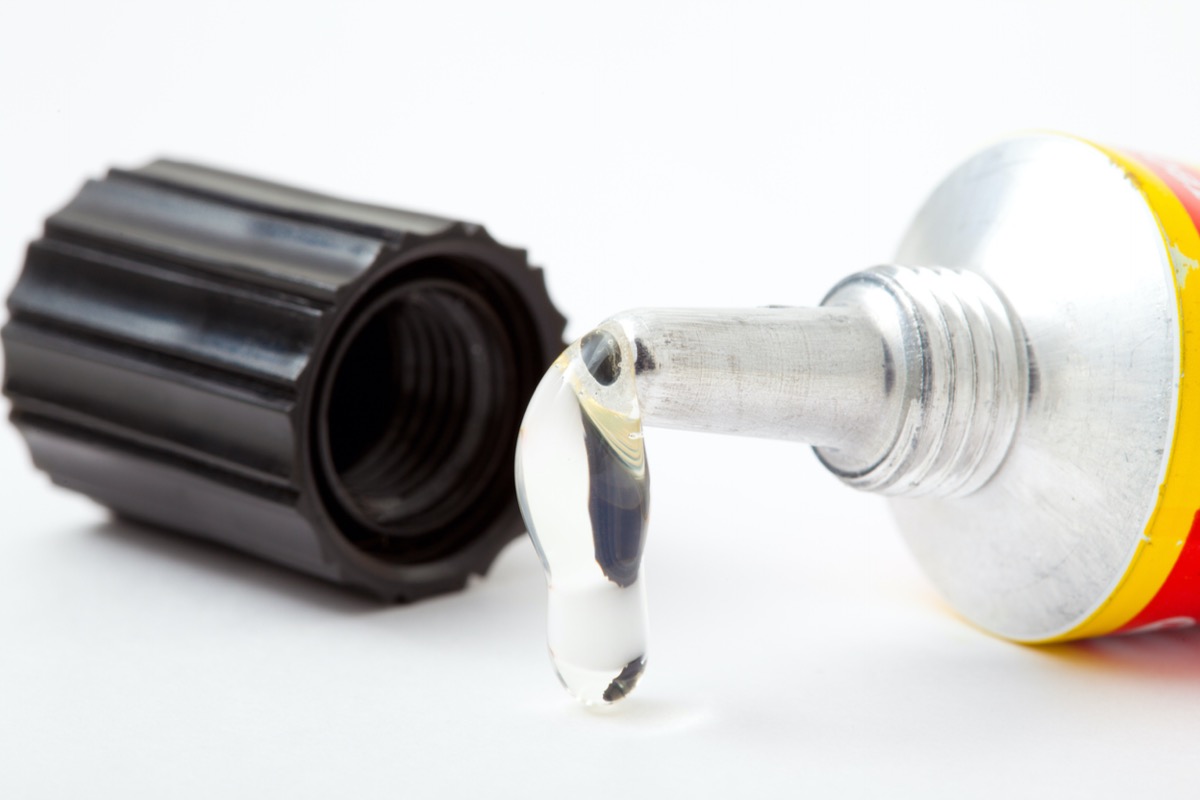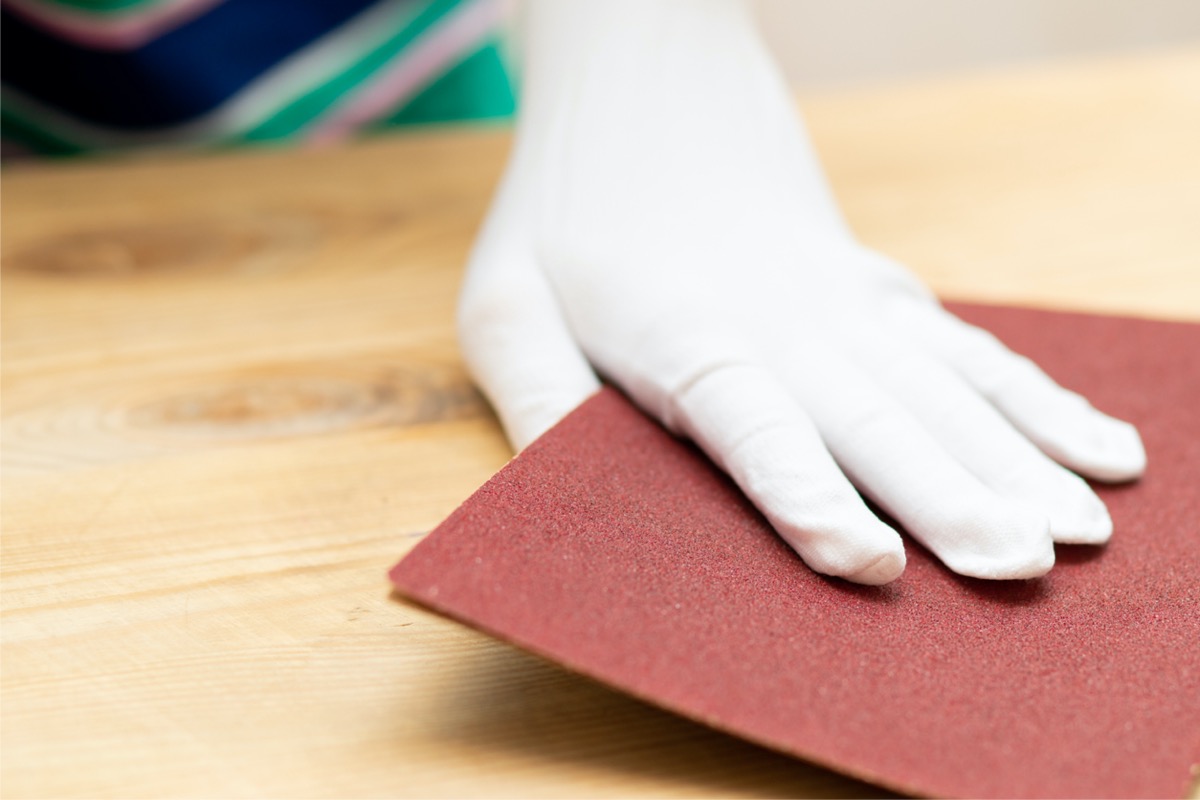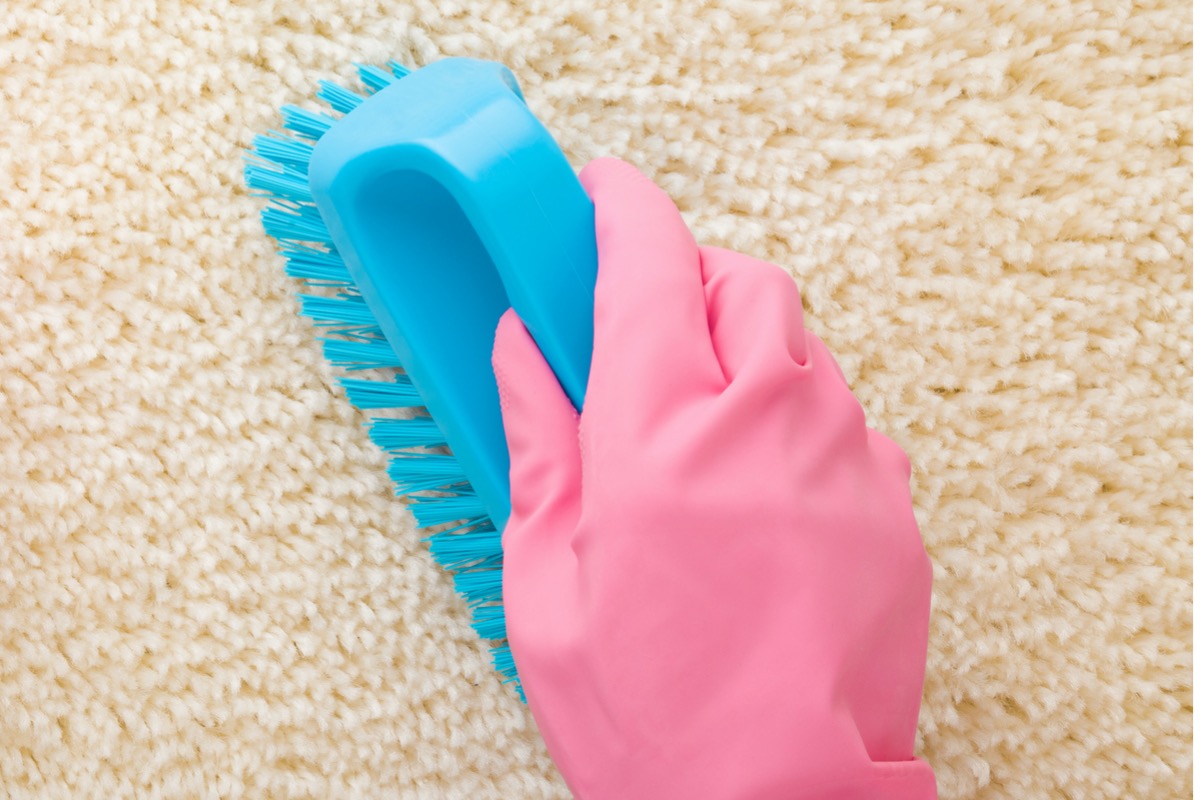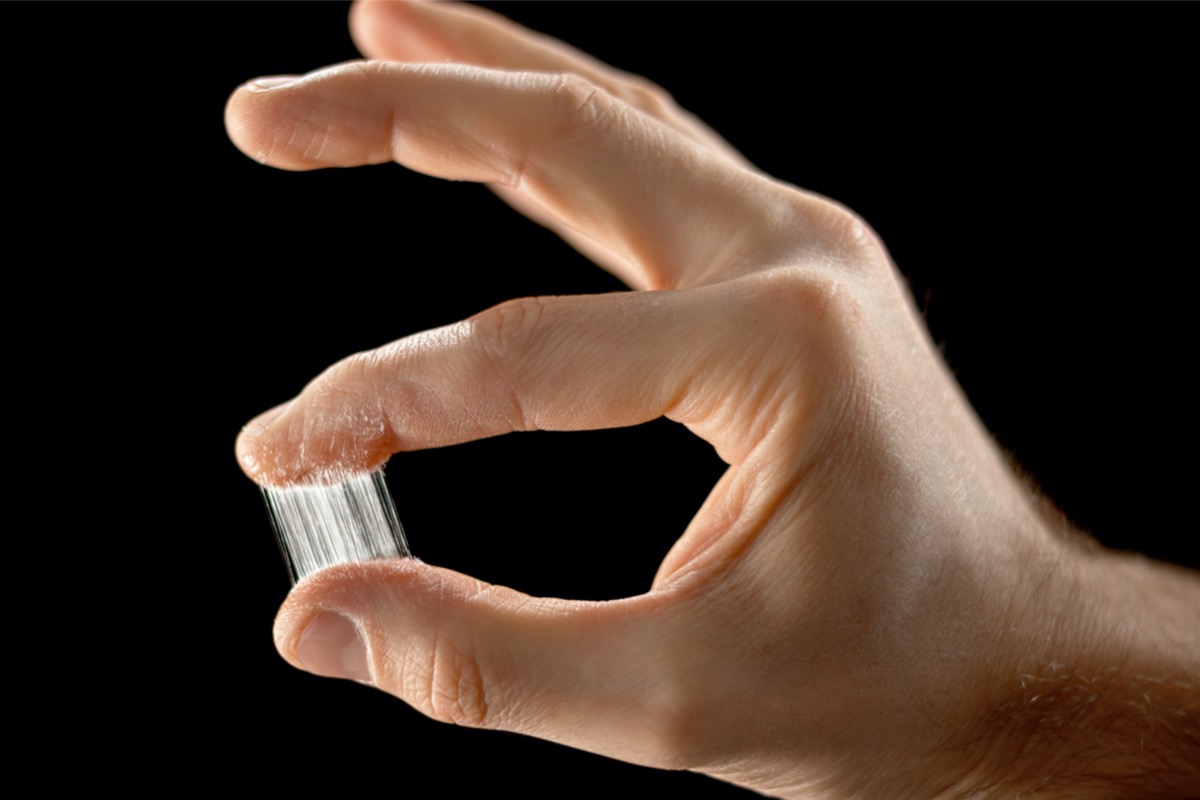

We may earn revenue from the products available on this page and participate in affiliate programs. Learn More ›
Known for its impressive strength and ultraquick dry time, super glue plays a vital role in many household fixes. But, often when it’s used for a variety of crafts, woodworking projects, or everyday repairs, its swift bonding properties have a nasty habit of unintentionally gluing things together—like your fingers, for instance.
Because this fast-acting adhesive—known by several brand names, including Super Glue, Gorilla Glue, Krazy Glue, and Loctite—is impervious to water, it’s often not worth attempting the standard solution of soap and H2O to remedy mishaps.
Don’t fret, there are ways to remove super glue to safely pull apart whatever is accidentally glued together. Want to know what the secret weapon is? Acetone. This natural solvent, a primary ingredient in most nail polish removers, can work wonders, helping to remove the glue from your hands, clothes, and countertops.
Before you begin your de-sticking endeavor, remember this: Straight acetone can remove color from some fabrics and may cloud some surfaces, so use it with caution and always test a small area first.
How to Remove Super Glue From Countertops
Superglue is vulnerable to friction, so a little extra elbow grease will be the key to removing it from countertops, plastic, or other hard surfaces. Once you realize there is super glue on a countertop, move swiftly to clean it up. It’s easier to remove super glue from a countertop before it cures. Once any super glue hardens completely, it requires more effort and time to remove it from a countertop.
Acetone is a nontoxic solvent, which helps break down hardened glue. Thankfully, acetone is safe to use on virtually any type of kitchen countertop, including laminate, marble, and granite. In spite of this, it’s always recommended that you test the acetone on a discreet area before trying to remove the super glue from your countertop. Though acetone is safe for the counter, it might damage the finish or cause discoloration, which means the finish may need to be repaired after removing the glue.

SUPPLIES
STEP 1: Apply acetone to the glue.
First, dab some acetone on a cotton ball. Rub the soaked cotton ball on the unwanted glue in small, circular motions (avoiding clean areas of the countertop as much as possible) until it loosens.
STEP 2: Peel off the glue.
Next, try to peel the glue off the countertop slowly and carefully.
STEP 3: If peeling doesn’t work, try scraping.
If the glue doesn’t budge at first, use a putty knife or sandpaper to scrape it away gently.
STEP 4: Reapply acetone if necessary.
If the glue won’t budge and there is no sign of any effect from acetone or scraping on the countertop, try going back to the first step. Continue to reapply the acetone and peel or scrape a few times before your table or countertop is free of super glue.
How to Remove Super Glue From Fabric
Unlike removing super glue from a countertop, you want to wait for the glue to dry before trying to remove it from fabric to avoid making the spot bigger and pushing the glue deeper into the fibers. Acetone does not work with all types of fabric, which is why you need to test it out first—but make sure you’re using acetone that isn’t mixed with other chemicals that can stain the fabric.
It helps if you know the fabric type of your furniture or garment before using acetone to remove super glue. Acetone can damage fine natural fibers like silk and wool, but it works on many other fabrics including cotton, nylon, linen, olefin, rope, and more, with no ill effects. Fabrics containing modacrylic, acetate, or triacetate fibers—like blended synthetics—should never be cleaned with acetone because acetone is a solvent that dissolves fabrics made with plastic materials.
For fabrics on which you cannot use acetone, try using warm white vinegar, non-acetone nail polish remover, or rubbing alcohol instead (but don’t forget to test it on the fabric first).
Sometimes it’s not possible to rescue fabric once it’s been touched by super glue. That’s why it’s best to take the precautions to avoid this problem from happening in the first place. Whenever you use super glue, change into coveralls or clothes you don’t mind getting messy, and use the glue at a work station rather than from a cozy chair or couch.

SUPPLIES
STEP 1: Scrape off glue chunks.
Use the edge of a butter knife or spoon to dislodge larger chunks of glue from the fabric.
STEP 2: Test fabric safeness.
Test the nail polish remover on an inconspicuous section of the fabric. Acetone evaporates quickly, so you should know whether it’s safe to use on the glued area within a few minutes.
STEP 3: Apply acetone to the spot.
Once you feel it is safe for the fabric, apply acetone to a cotton ball or paper towel. Then press and hold the acetone-soaked material onto the super glue spot for a few minutes. If acetone does not appear to be safe, try the vinegar solution above.
STEP 4: Scrub the stain.
After applying acetone, scrub the super glue stain with a scrub brush until the glue flakes off.
STEP 5: Reapply as necessary.
If the first attempt doesn’t remove all the super glue, reapply and scrub again. Work in stages if necessary to reach all the glue.
STEP 6: Wash the fabric with laundry detergent.
Finish by rubbing a dollop of laundry detergent into the spot and washing the piece in the laundry. This will help remove any residual glue or acetone.
How to Remove Super Glue From Skin
It’s easy to slip into panic mode when you realize you’ve super-glued your fingers together or your skin to an object. You might be inclined to rush to free yourself, but that haste can cause an injury if you pull your skin too hard or apply too much force. Breathe and be patient as you work to break down the glue.
Super glue on fingers is a common plight of the DIYer, so learning how to remove it safely is a good lesson. It’s easiest to remove before the glue cures, but even if it hardens, you still can eliminate it. Because the cyanoacrylate in super glue heats up when it comes into contact with cotton (and the reaction can actually burn the skin), clear away clothing, tissues, and similar materials from the area. Take care, too, not to touch anything with super glue on your fingers. If you’re experiencing pain, consult a medical professional immediately.
In the worst-case scenario, if you cannot get the super glue off your fingers and the dried glue isn’t bothering you, just leave it. Skin sloughs off naturally, and the glue will come off with it. For your next project involving super glue, wear protective, nonporous gloves to prevent your fingers from sticking.

SUPPLIES
STEP 1: Wash the skin with soap and water.
Washing your super glue-covered skin with soap and water can soften the glue and break the adhesive bond. After washing, try to carefully peel the super glue off the skin using a craft stick or similar tool.
STEP 2: Rub remaining glue with a coarse kitchen staple.
If there is still super glue on your fingers, get your hands wet, cover the area in sugar or salt, and rub the coarse material on the skin to agitate and soften the glue before trying to peel it off again.
STEP 3: Use acetone for stubborn super glue.
For stubborn super glue spills on skin, you might need to apply acetone (nail polish remover). Only do this after thoroughly washing and drying your hands to avoid any potential problems with mixing salt or sugar with acetone. Add the acetone to a cotton ball or paper towel, dab it on your skin, and carefully peel back the glue with a craft stick.
Keep in mind that acetone will dry out the skin, so wash the area completely with soap and water, and apply lotion when you’re finished.
Pro Tips for Preventing Accidental Super Glue Stickups
Super glue sets so quickly; it’s easy to accidentally glue something together despite your best intentions. The best remedy is actually prevention: Cover your work area with aluminum foil before starting. Also, make an effort to choose the super glue product with the appropriate formulation and applicator for your project—sometimes a gel is the answer, and sometimes a precision-tip pen is the way to go. Most important, remember that just a little super glue goes a (very) long way.
Final Thoughts
Super glue accidents happen even to the most diligent DIYers. Super glue is tremendously strong and helpful for many projects, but never underestimate how much patience and work is required to remove it from an area where it has been applied incorrectly. Keep a bottle of acetone on hand just in case glue goes where it shouldn’t. Just like with other home projects, the best way to avoid this problem is to take preventive action by wearing appropriate clothing and working in a suitable location.
FAQs About Removing Super Glue
Super glue comes with the reputation of being the strongest glue out there—with good reason. Once the glue hardens, it’s nearly impossible (not to mention unsafe) to remove the adhesive with force alone . There is a lot to know about this type of glue. Here are some of the most common questions and answers about how to remove super glue.
Aside from a super glue remover sold by glue companies, one of the most effective ways for how to dissolve super glue is with a solvent called acetone. This material breaks down the glue, making it possible to remove it from tabletops, fabrics, and skin.
Removing super glue from a metal lock (or any other metal) is very similar to removing super glue from a countertop. Apply cotton swabs soaked in acetone to the glue for 5 to 10 minutes, and scrape it off with a putty knife once it loosens.
When Gorilla Glue hardens in the bottle from lack of moisture, it’s still salvageable. If you immerse the entire bottle of Gorilla Glue in hot—but not quite boiling—water, the glue should soften enough to use once the water cools to a warm temperature.
Skin cells slough off naturally all the time. If there is super glue on fingers or skin, it should loosen and come off within a few days. You can help expedite the process by scrubbing the area frequently with soapy water.
